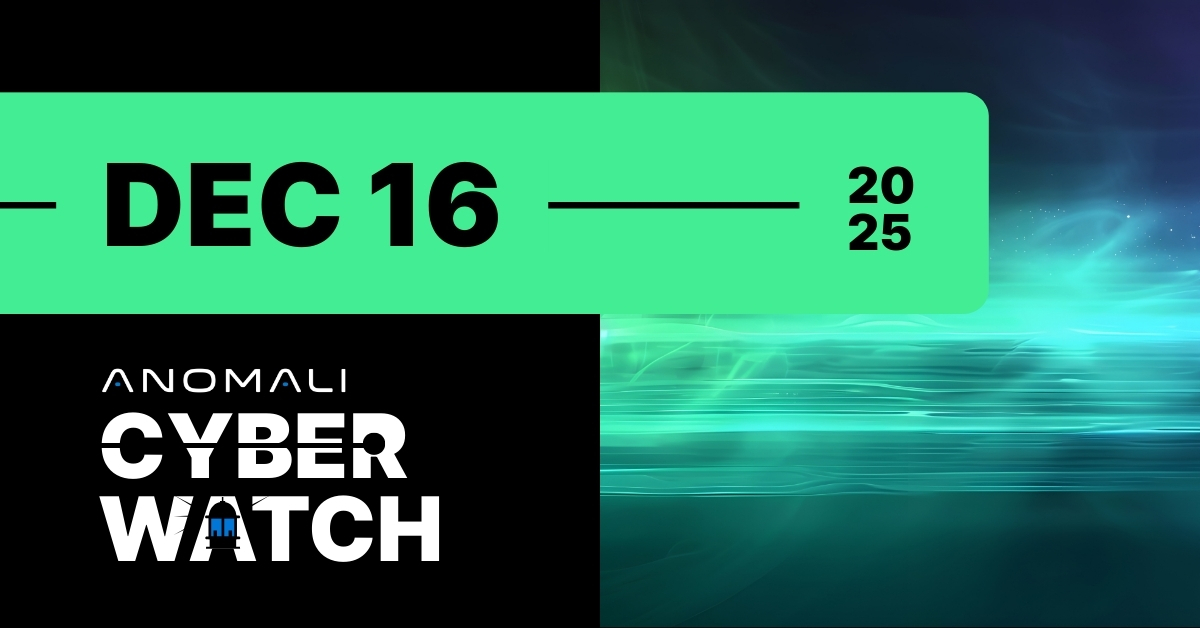Focusing On the Right Threat Intelligence Metrics for SOC Success


AI-driven threats, automated and disruptive public attacks, and increasingly sophisticated adversaries have made it clear that traditional security operations (SecOps) approaches are just not doing what they’re supposed to. Organizations need to detect, investigate, and respond to threats faster than ever. For something this complex and dynamic, having the right frame of reference means measuring the right threat intelligence metrics — a foundational part of any successful intelligence program.
To fail is to risk your brand reputation and put your business at risk.
For security operations centers (SOCs), threat intelligence is the foundation for proactive defense, allowing analysts to anticipate and mitigate attacks before they wreak havoc. But simply having access to intelligence isn’t enough. To go to the next level on security outcomes, cyberthreat intelligence (CTI) teams need to understand and focus on the most meaningful metrics — the ones that drive efficiency, reduce noise, support workflows of stakeholder teams, align with intelligence requirements, and improve decision-making.
What Are the Key Threat Intel Metrics?
Effective cyber threat intelligence metrics fall into four critical categories: effectiveness, efficiency, threat landscape coverage, and business impact. These help organizations establish a tangible program baseline and define time frames for program success.
1. Intelligence Effectiveness Metrics: Measuring the Value of Detection
Threat intelligence should enhance detection, not just add more noise. Without the right metrics, it’s difficult to tell whether your intelligence is actually helping the SOC identify and prioritize real threats or simply piling on to alert fatigue. These CTI metrics measure how well threat intelligence supports threat detection, so that security teams can focus on what actually matters.
- Threat detection rate: The percentage of total threats successfully detected with threat intelligence over a period of time to demonstrate how well intelligence contributes to early-stage identification. A higher detection rate means fewer threats slip through unnoticed, reducing the likelihood of breaches. For example, if threat intelligence helps detect 90% of phishing attempts before they reach employees, it significantly lowers the risk of credential theft and fraud.
- True positive rate: The percentage of alerts generated from threat intelligence that were genuinely malicious, minimizing resources wasted on false leads. A high true positive rate ensures analysts spend their time investigating real threats instead of chasing false alarms. If threat intelligence-generated alerts have an 85% true positive rate, the SOC operates more efficiently, reducing the need for additional hires while cutting down response times.
- False positive rate: If the SOC is overwhelmed by threat intelligence-based alerts that turn out to be benign, filters might be too broad or outdated. This metric helps refine threat intel feeds. Reducing false positives lowers operational costs by preventing alert fatigue and burnout among analysts. For instance, if tuning threat intelligence sources reduces false positives by 40%, team members can shift focus from time-consuming triage work to proactive threat hunting.
- Mean time to detect (MTTD): The faster a threat is detected, the less damage it can cause. This metric measures how quickly the SOC can detect an attack after it enters the environment. Faster detection means reduced dwell time and breach rates. If MTTD drops from 12 hours to two, thanks to threat intelligence enhancements, an attacker has significantly less time to escalate privileges or exfiltrate data, preventing financial and reputational losses.
Threat intelligence platforms (TIPs) can make a dramatic difference in measuring and improving effectiveness metrics like those above. Anomali ThreatStream measures how many false positives are associated with each intel feed, and the platform's machine-learning algorithm assigns confidence and severity scores for every observable to improve alert accuracy.

2. Operational Metrics: Optimizing the SOC’s Response
The rising tide of alerts in a SOC doesn’t just slow down response times — it contributes to analyst fatigue, decision paralysis, and ultimately, burnout. Measuring the impact of threat intelligence on SOC operations ensures that teams can respond to threats faster, reduce noise, and focus on what truly matters: stopping attacks before they cause damage. These key metrics provide insight into resource planning and how effectively an organization's CTI program can detect, investigate, and mitigate threats.
- Mean time to investigate (MTTI): How long does it take analysts to investigate an alert enriched by threat intelligence? A lower MTTI means faster triage, reduced dwell time for threats, and fewer alerts left unresolved. When investigation times drop, SOC teams can handle a higher volume of alerts without increasing headcount, improving both security outcomes and operational efficiency.
- Mean time to respond (MTTR): Once a threat is confirmed, how fast can the SOC take action? Every second matters in stopping an attack from escalating into a breach. A lower MTTR minimizes potential damage, reduces downtime, and protects business continuity. Faster response times also translate to lower incident recovery costs and improved compliance with regulatory response requirements.
- Intelligence overlap and redundancy: If different sources provide duplicate indicators, they may be adding unnecessary complexity. Excessive redundancy can inflate costs, slow down investigations, and create false confidence in duplicate intelligence. Optimizing and normalizing threat intelligence feeds ensures analysts receive high-quality, actionable intelligence without excess noise, leading to more effective decision-making and reduced operational overhead.
Tracking these metrics ensures that threat intel isn’t just another data source — it’s a force multiplier that helps SOCs move from reactive to proactive security, driving better protection and business resilience.
3. Threat Landscape and Risk Metrics: Understanding Coverage Gaps
Threat intelligence is only as valuable as its relevance. If it doesn’t cover the threats that matter most to an organization — whether they stem from industry-specific cyber risks, evolving attacker tactics, or known adversaries — it risks becoming just another data feed. Effective threat intelligence should provide security teams with actionable insights that directly support their specific risk management strategy, helping them prevent, detect, and respond to threats more efficiently. These key metrics assess how well a threat intelligence program aligns with the organization’s risk profile, ensuring that security investments drive measurable improvements in protection and resilience.
- Threat coverage (intelligence breadth): Does threat intelligence address a broad range of threats, including emerging attack techniques (such as those mapped to the MITRE ATT&CK(R) framework) and industry-specific risks? Comprehensive threat coverage ensures that security teams aren’t blindsided by new attack vectors or sector-specific adversaries. This creates better preparedness against evolving threats, reduces the likelihood of successful attacks, and improves compliance with industry regulations requiring robust threat awareness.
- Incident correlation rate: How often do threat intelligence indicators match real-world security incidents in your environment? A high correlation rate means intelligence is directly relevant and actionable, providing the SOC with valuable context for investigations. When threat intelligence aligns closely with active threats, organizations benefit from faster detection, improved prioritization of security efforts, and reduced response times, leading to a lower risk of breaches and financial losses.
- Blocked vs. unblocked indicators: The number of intelligence-based indicators proactively blocked at firewalls, endpoints, and SIEM versus those left unmitigated. A high block rate indicates that threat intelligence actively prevents threats before they escalate, reducing the burden on SOC analysts. Proactive blocking also lowers the cost of incident response, minimizes operational disruptions, and enhances overall cybersecurity ROI by stopping threats at the earliest possible stage.
- Indicator of compromise (IoC) expiry effectiveness: Are outdated IoCs being removed promptly to avoid unnecessary noise and wasted effort? Retaining stale or irrelevant IoCs can overwhelm analysts, leading to wasted investigation time and missed critical threats. Keeping intelligence fresh and relevant ensures that security resources are spent on real risks rather than outdated indicators, increasing SOC efficiency and reducing alert fatigue.
- Threat attribution success rate: Can intelligence help link incidents to specific threat actors or campaigns, improving strategic decision-making? Understanding threat actor information enables proactive defense strategies, such as tailored threat-hunting exercises and more effective risk mitigation. This creates better alignment between security and executive leadership, improved resource allocation, and stronger defenses against persistent adversaries.
By tracking these metrics, organizations can ensure their threat intelligence strategy isn’t just generating data — it’s delivering real security and business value.
4. Business Impact Metrics: Proving the Value of Threat Intelligence
Beyond technical optimization, CTI teams must also demonstrate the business value of threat intelligence to secure ongoing investment. Senior leadership teams and stakeholders need to see how threat intelligence reduces risk, lowers costs, and ensures regulatory compliance. These high-level metrics assess the overall business goals of threat intelligence, helping organizations quantify its return on investment and risk reduction benefits.
- Reduction in mean time to containment (MTTC): How much faster does the SOC contain threats due to improved intelligence? Containment is critical in stopping an attack before it spreads, minimizing damage and downtime. A lower MTTC means fewer operational disruptions, reduced risk of data loss, and improved business continuity. Faster containment directly translates to cost savings by limiting security incidents' financial and reputational impact.
- Threat intelligence cost vs. ROI: What is the financial impact of threat intelligence on reducing security incidents and breach-related costs? Security investments must be justified, and threat intelligence’s effectiveness should be measured in terms of its ability to prevent incidents that would otherwise lead to financial losses or legal/regulatory penalties. A strong ROI demonstrates that intelligence-driven security reduces operational costs by preventing breaches, optimizing security team efficiency, and minimizing downtime.
- Incident reduction due to threat intelligence implementation: Has intelligence-driven security lowered the number of successful attacks over time? A decreasing trend in security incidents indicates that threat intelligence successfully identifies and mitigates threats before they can cause harm. Fewer successful attacks mean lower recovery costs, reduced legal liability, and improved customer trust — ultimately protecting the organization’s brand and bottom line.
- Compliance and regulatory alignment: How well does threat intelligence support compliance efforts (e.g., DORA, NIS2, GDPR) by providing required monitoring and reporting data? Many regulations mandate continuous threat monitoring, incident reporting, and proactive security measures. Effective threat intelligence helps organizations meet these requirements efficiently, reducing the risk of non-compliance penalties and audit failures. Beyond avoiding fines, strong regulatory alignment enhances the organization’s security posture and builds trust with regulators, customers, and stakeholders.
By tracking these metrics, SOC teams can demonstrate that threat intelligence is not just a tactical advantage — it’s a strategic business enabler that reduces risk, improves efficiency, and safeguards the organization’s long-term success.
Start Measuring Threat Intelligence Metrics — Before It’s Too Late
Threat intelligence is only as valuable as the security outcomes it delivers. SOC leaders can’t afford to waste time on irrelevant data, slow response times, or ineffective threat intelligence investments. Measuring the right metrics isn’t just about tracking performance — it’s about driving real security improvements that align with business objectives.
A strategic, data-driven approach to measurement helps SOC teams:
- Cut through the noise: Focus analysts on high-priority threats by reducing false positives and surfacing actionable intelligence.
- Accelerate response times: Strengthen automation, correlation, and threat prioritization to stop attacks before they escalate.
- Maximize ROI on threat intelligence: Eliminate ineffective feeds and optimize resources for intelligence that truly strengthens defenses.
- Demonstrate security’s business value: Provide clear, measurable proof of risk reduction, regulatory compliance, and resilience against evolving threats.
Anomali ThreatStream helps CTI teams with capturing and improving the metrics listed above. Between observable confidence and severity scoring, false positive measurement, contextualization, deduplication, MITRE ATT&CK Mapping, and more, ThreatStream is designed to help CTI teams focus on detecting, investigating, and responding to the threats that matter most. Schedule a demo today to learn more.
FEATURED RESOURCES

Anomali Cyber Watch: GhostPenguin, SharePoint Exploits, Android Spyware, CastleLoader Malware Expansion, and more



